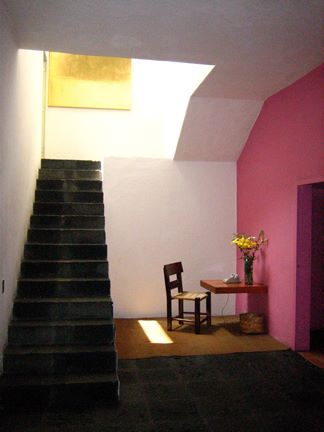Luis Barragán: The Visionary Architect Who Redefined Mexican Modernism
Discover the life and work of Luis Barragán, the renowned Mexican architect who redefined modernism with his innovative use of color, light, and space. Learn about his enduring legacy and explore the UNESCO World Heritage Site of the Luis Barragán House-Workshop.

Luis Barragán was an architect, urban planner, and landscape designer from Mexico who is widely regarded as one of the most influential architects of the 20th century. He is renowned for his use of color, light, and space to create unique atmospheres and evoke emotional responses in his designs.
Barragán was the first Latin American to win the prestigious Pritzker Architecture Prize in 1980, which put him on the map as one of the world's most significant architects. In this article, we will explore the life, work, and legacy of Luis Barragán, including some of his most notable creations.
Early Life and Education
Luis Barragán was born on March 9, 1902, in Guadalajara, Jalisco, Mexico. He grew up in a wealthy family and was educated in Catholic schools. He studied engineering at the Escuela Libre de Ingenieros in Guadalajara before moving to Mexico City in 1923 to study architecture at the National Autonomous University of Mexico (UNAM). During his studies, Barragán was heavily influenced by the works of architects such as Le Corbusier, Frank Lloyd Wright, and Mies van der Rohe.
Career and Style
Barragán began his architectural career in 1927 by designing a house for his family in Guadalajara. He then went on to design a series of houses and buildings that reflected his unique style, which combined traditional Mexican architecture with modernist influences. His buildings were characterized by their use of bright colors, geometric forms, and strong visual contrasts.
Barragán's most famous works include the Satellite Towers, which he created in collaboration with artists Mathias Goeritz and Jesús Reyes Ferreira. The towers were designed to be a symbol of modernity and progress for Mexico City and were painted in bright primary colors to create a striking visual contrast with the surrounding landscape.
Another of Barragán's most significant works is the Chapel of the Sacramental Capuchins, which he designed in 1952. The chapel is located in Tlalpan, Mexico City, and is renowned for its use of light and shadow to create a mystical and contemplative atmosphere. The chapel's interior is a striking combination of red and gold, which creates a sense of warmth and intimacy.
Perhaps Barragán's most famous creation is the Luis Barragán House, which he built in 1948 as his residence and workshop. The house is located in Mexico City and is renowned for its use of light, space, and color to create a serene and contemplative environment. The house's interior is painted in shades of pink, blue, and yellow, which create a sense of calm and tranquility.
Legacy
Luis Barragán's legacy is significant, not only in Mexico but around the world. His buildings are celebrated for their innovative use of color, light, and space, and for the way they evoke emotional responses in those who experience them. His influence can be seen in the work of many contemporary architects, including Tadao Ando, Richard Meier, and Zaha Hadid.
In recognition of his contributions to the field of architecture, Barragán was awarded the Pritzker Architecture Prize in 1980, becoming the first Latin American and the only Mexican to receive the award. He was also honored with the Gold Medal of Fine Arts from the Spanish government in 1984.
Barragán's legacy is preserved in the Luis Barragán Foundation, which was established in 1988 after his death. The foundation works to promote the study and preservation of Barragán's work and to ensure that his legacy continues to inspire future generations of architects and designers.

Conclusion
Luis Barragán was a pioneer in the field of architecture, whose unique style and innovative use of color, light, and space have left an indelible mark on the world. His buildings and designs are celebrated not only for their beauty and functionality but also for their ability to evoke deep emotional responses in those who experience them.
Barragán's work is also notable for its commitment to preserving Mexico's cultural identity and traditions while embracing the innovations of the modern world. His use of traditional Mexican architecture, combined with modernist influences, created a unique aesthetic that has come to define Mexican modernism.
The Luis Barragán House-Workshop, which was designated a UNESCO World Heritage Site in 2004, is a testament to Barragán's enduring legacy. The house, which is open to the public, provides a rare opportunity to experience the beauty and tranquility of his work firsthand.
Barragán's influence can be seen in the work of many contemporary architects, who continue to draw inspiration from his innovative approach to design. His legacy also lives on through the Luis Barragán Foundation, which works to preserve and promote his work and to ensure that future generations are inspired by his innovative spirit.




